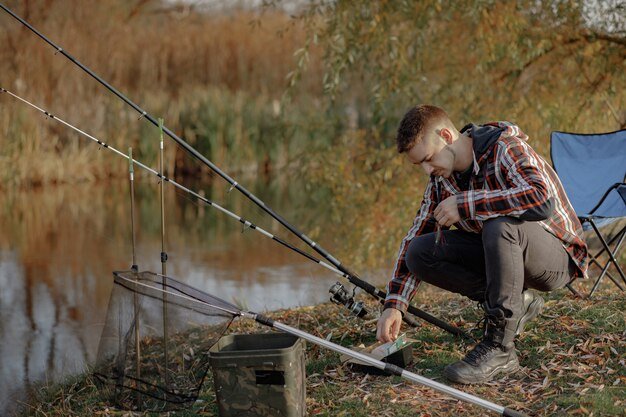Introduction
A broken fishing rod can ruin a great day outdoors. A sudden snap during casting or reeling often leaves anglers frustrated. But don’t throw out that favorite rod just yet! With the right tools and a few easy steps, you can repair many broken rods at home. In this guide, we’ll show you exactly how to fix a broken fishing rod (millä liittää katkennut virvelin vapa) so you can keep enjoying your fishing trips.
What Causes Fishing Rods to Break?
Rods snap for many reasons. Excessive pressure, hard impacts, and general wear all play a role. Frequent fishing also wears down a rod over time. Knowing the cause can help prevent future breaks, but the focus here is to get your rod back in working condition. Below are common materials you’ll need for the repair.
Essential Materials
- Epoxy Glue – A strong adhesive for securing broken pieces
- Fiberglass Cloth or Tape – Adds stability to the repair
- Sandpaper – Smooths rough edges for better adhesion
- Heat Shrink Tubing – Useful for smaller breaks near the tip
- Rod Wraps or Tape – Strengthens and secures the repair area
Types of Breaks and How to Fix Each One
1. Clean Break in the Middle of the Rod
Middle breaks are often the easiest to fix. A clean snap means you can fit the two ends back together snugly.
How to Fix It:
- Sand the Edges: Smooth both broken ends with sandpaper.
- Apply Epoxy: Spread epoxy glue over both ends.
- Reinforce with Fiberglass Tape: Wrap fiberglass tape around the break and secure it with more epoxy.
- Let it Cure: Give it at least 24 hours to dry fully.
2. Splintered Break Near the Tip
Splintered tips need careful handling. The tip is more flexible, so repair requires a gentle touch.
How to Fix It:
- Trim and Sand Splinters: Sand down any loose fibers around the break.
- Apply Epoxy and Tubing: Coat the area lightly with epoxy. Slide heat shrink tubing over the break.
- Heat the Tubing: Use a heat source to shrink the tubing, creating a tight seal.
- Let It Set: Give it time to cure before using.
3. Break at the Base of the Rod
Breaks near the rod’s base require extra support since this area takes more strain.
How to Fix It:
- Use a Dowel for Support: Insert a small dowel into the rod base for added strength.
- Apply Epoxy and Wrap: Spread epoxy over the break, add the dowel, and wrap it with fiberglass tape.
- Allow Time to Cure: Let it dry completely before testing.
Tips for Strengthening Your Fishing Rod Repair
- Double Wrap for Extra Strength: A second layer of fiberglass or cloth provides more durability.
- Test Before Using It: Test your repair gently to make sure it holds well.
- Avoid Heavy Loads: Keep the rod’s strain in mind, especially after a repair, to prevent another break.
Preventing Future Breaks
Avoiding rod breaks is possible with a few smart habits. Here’s how:
- Store Carefully: Keep your rod in a case or sleeve to protect it from impacts.
- Don’t Overload It: Stay mindful of the rod’s capacity. Heavy loads stress the rod over time.
- Inspect Regularly: Check your rod for signs of wear, especially after long trips or big catches.
Conclusion
You can repair a broken fishing rod (millä liittää katkennut virvelin vapa) with a few simple materials and techniques. By following these steps, your rod can still serve you well. With a little patience and some careful work, you’ll save money and get back to the water sooner. Fixing your rod also gives you a sense of accomplishment and keeps your favorite gear by your side for many fishing adventures to come.
FAQs
1. Can I repair any broken rod?
Most fishing rods are fixable, but severe breaks might affect their performance.
2. Can I catch big fish with a repaired rod?
A repaired rod works best with smaller catches. Test it carefully if you plan to go for larger fish.
3. How long should epoxy cure on a rod?
Epoxy usually takes around 24 hours to cure fully. Follow the instructions on your product.
4. What type of glue works best for rod repairs?
Epoxy glue offers the best strength and flexibility, so it’s ideal for fishing rods.
5. Should I double-wrap with fiberglass?
Yes, double wrapping provides added strength, especially in high-stress areas.
6. Can I reinforce a rod break near the base?
Yes, use a dowel and wrap with fiberglass for extra support.

